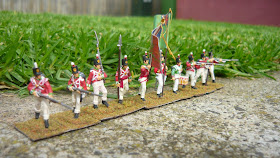I've recorded step-by-step photos of the procedure.
First gather your ingredients; Kitchen sponges, wood putty, spray paint, artist acrylic (I use burnt sienna), flock, PVA glue. All items bar the flock I picked up at the hardware shop, supermarket and the local $2 shop (or as I like to call it the lotsacrap). The putty and spray paint were the most expensive at roughly $15 AUD each, but then you won't have to fork out again for a very long time. Eight long road pieces and the smaller pieces pictured below later and I've still got two thirds of the tin of putty left.
 Cut the kitchen sponge into the desired shapes.
Cut the kitchen sponge into the desired shapes.
Spray the edges of the of the road pieces with the appropriate colour ie. a light tan, otherwise you have lovely roads that have a fluoro edge when seen from the side.

Slather the surface of your road piece in wood putty. Don't be too fussed with getting the putty to the edges as they will be covered in the flocking. However the ends of the roads do need to be well covered to avoid the tell tale peep of sponge colour breaking through.

Don't worry about getting it too smooth, as the effect we're after is rough dirt after all. For added effect I ran the edge of the icy-pole stick, which I used to apply the putty, along the soft putty to make a pair of wheel ruts.

Once it's dried a bit, I dry-brush the pieces with the artist's acrylic and then flock the edges and the middle using the PVA and a combination of Woodland Scenics coarse turf and blended turf. Leave over night to dry. Next morning they will have a rather alarming camber as the dried putty will have contracted, pulling the sponge base inwards. With a combination of ironing using a moderate heat (no steam), making sure you cover the pieces in an old tea towel first to protect the iron, and then placing underneath a heavy item (say, the Waterloo Companion by Mark Adkin, isbn 0811718549) for another day, you'll have some nice, cheap country roads for your troops to march to battle on!














